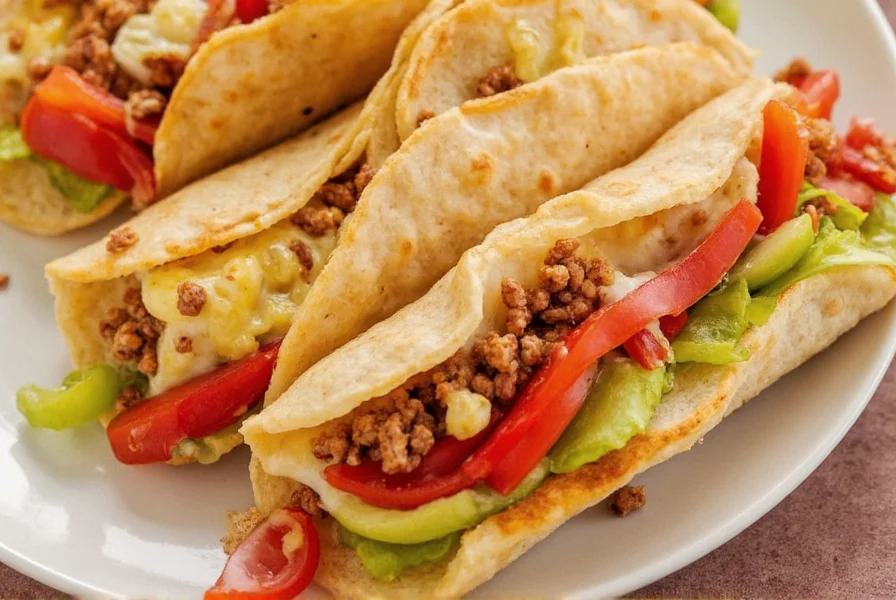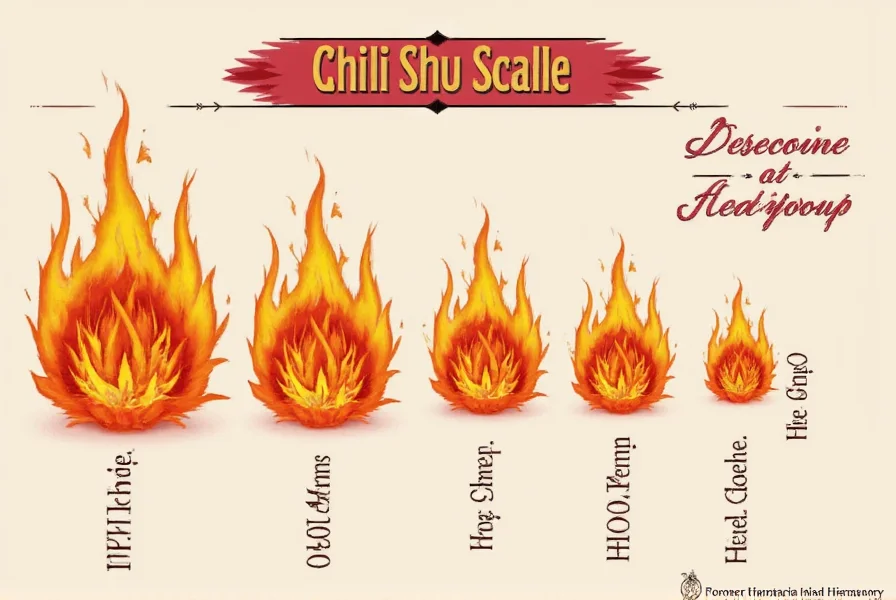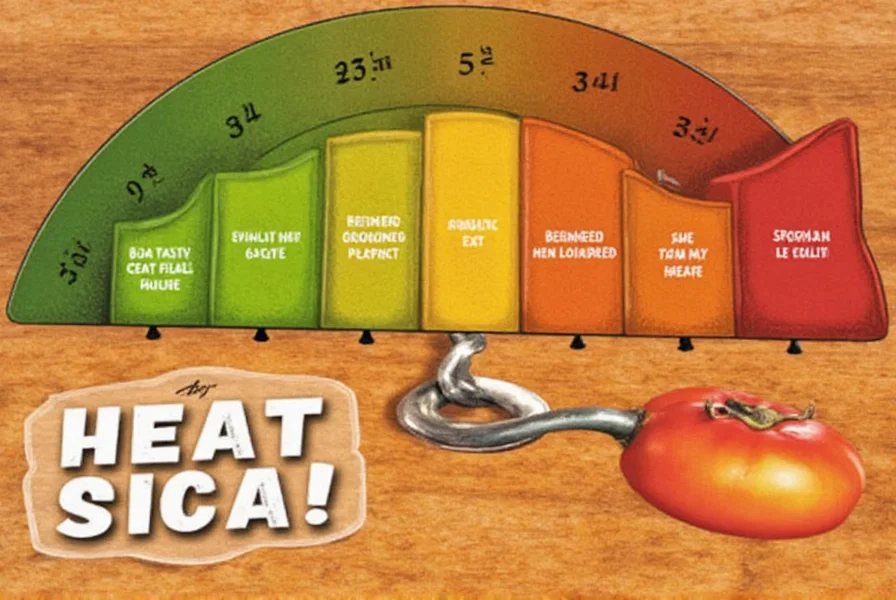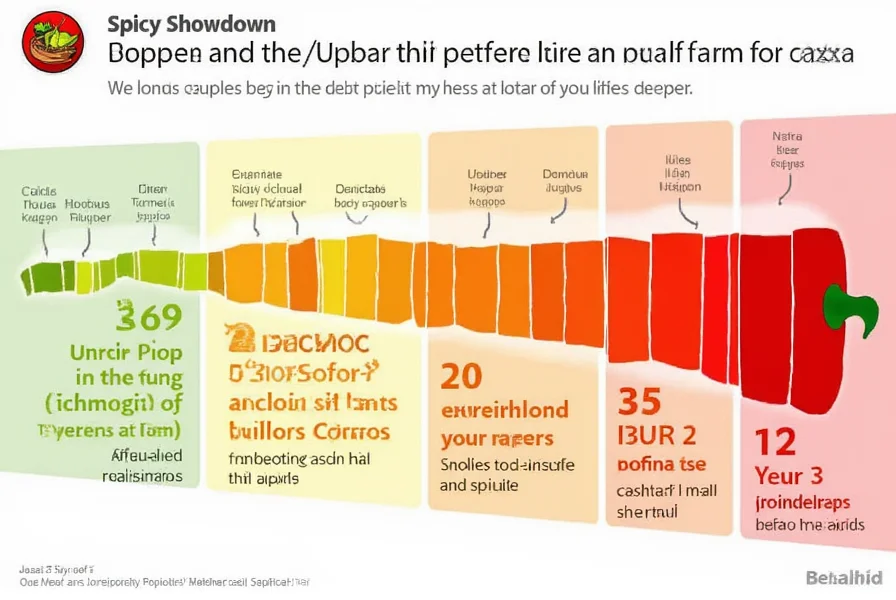Table of Contents
Introduction to the SHU Pepper Scale
The Scoville Heat Unit (SHU) scale is the standard measurement for the spiciness of chili peppers, quantifying capsaicin concentration to determine heat levels. Developed in 1912 by pharmacist Wilbur Scoville, the scale ranges from 0 (bell peppers) to over 2 million SHU (Carolina Reaper), providing a clear guide for spice enthusiasts and cooks alike. Understanding SHU values helps prevent unexpected heat exposure and ensures safe, enjoyable culinary experiences.

How the SHU Pepper Scale Works
The SHU scale measures capsaicinoid concentration—the compounds responsible for pepper heat. Originally developed through human taste tests (diluting pepper extract until heat is undetectable), modern measurements use high-performance liquid chromatography (HPLC) for precise capsaicin quantification. Results are converted to Scoville units for consistency. Higher SHU values indicate greater capsaicin concentration and intense heat.
For example:
- Jalapeño: 2,500–8,000 SHU (mild heat)
- Carolina Reaper: 1,400,000–2,200,000 SHU (extreme heat)

Practical Tips for Navigating the SHU Scale
- Start low and progress gradually. Begin with peppers under 5,000 SHU (e.g., bell peppers, poblanos) before advancing to hotter varieties.
- Always use gloves when handling hot peppers. Capsaicin binds to skin and mucous membranes. Remove gloves before touching eyes or face.
- Keep dairy products nearby. Milk, yogurt, or sour cream contain casein that neutralizes capsaicin more effectively than water.
- Avoid alcohol-based solutions. Alcohol spreads capsaicin rather than neutralizing it.
- Never mix unknown peppers without research. Combining high-SHU peppers (e.g., habanero + ghost pepper) can create dangerously intense heat.
Popular Peppers on the SHU Scale
| Pepper Name | SHU Range | Heat Level |
|---|---|---|
| Bell Pepper | 0–100 | Mild |
| Jalapeño | 2,500–8,000 | Medium |
| Cayenne | 30,000–50,000 | Very Hot |
| Habanero | 100,000–350,000 | Hot |
| Ghost Pepper | 855,000–1,041,427 | Extremely Hot |
| Carolina Reaper | 1,400,000–2,200,000 | Insanely Hot |
Pepper heat varies due to growing conditions, but these ranges represent typical measurements. Always verify specific pepper varieties before use.

Buying Guide: How to Choose the Right Pepper for You
1. Bell Peppers (0–100 SHU)
Best for: Beginners, children, and heat-sensitive palates
Key uses: Salads, stir-fries, roasted vegetables
Why choose: Zero capsaicin content provides vibrant color and crunch without heat
2. Jalapeños (2,500–8,000 SHU)
Best for: Everyday cooking, salsas, and mild spice enthusiasts
Key uses: Tacos, nachos, pickled snacks
Why choose: Balanced heat with fresh, vegetal flavor
3. Habaneros (100,000–350,000 SHU)
Best for: Intermediate spice lovers, hot sauces, and Caribbean cuisine
Key uses: Mango-habanero salsa, jerk marinades, hot sauce base
Why choose: Fruity aroma with intense, lingering heat
4. Ghost Peppers (855,000–1,041,427 SHU)
Best for: Experienced heat seekers, competitive eaters
Key uses: Extreme hot sauces, spice challenges
Why choose: Unique smoky flavor with prolonged heat duration
5. Carolina Reaper (1,400,000–2,200,000 SHU)
Best for: Only for professional spice enthusiasts with medical clearance
Key uses: Specialty hot sauces, novelty food challenges
Why choose: World-record heat with sweet undertones (handle with extreme caution)

Always verify pepper variety and SHU range before purchasing. When in doubt, start with lower-SHU options and gradually increase intensity.
Frequently Asked Questions
What does SHU stand for?
SHU stands for Scoville Heat Units, the standardized measurement scale for capsaicin concentration in chili peppers.
How is the SHU scale measured today?
Modern measurements use high-performance liquid chromatography (HPLC) to precisely quantify capsaicinoids, with results converted to Scoville units for consistency with historical data.
What's the mildest pepper on the SHU scale?
Bell peppers (0–100 SHU) contain negligible capsaicin, making them the mildest option with no heat but rich in vitamins and color.
What's the current hottest pepper on the SHU scale?
The Carolina Reaper holds the official Guinness World Record at 1,400,000–2,200,000 SHU. New cultivars are regularly tested but none have surpassed this as of 2025.
How can I reduce heat in an overly spicy dish?
Dairy products (milk, yogurt) neutralize capsaicin via casein. Adding fats (butter, oil), sugars, or starches (rice, bread) also helps absorb and dilute heat. Avoid water or alcohol, which spread capsaicin.
Does cooking affect a pepper's SHU rating?
Cooking doesn't change the actual capsaicin concentration (SHU value), but heat distribution methods (roasting, simmering) can alter perceived intensity. Roasting may mellow heat slightly while concentrating flavors.
Can I build tolerance to spicy foods?
Yes. Regular consumption desensitizes TRPV1 receptors over time. However, tolerance diminishes within weeks without consistent exposure. Always listen to your body—never force excessive heat.
Why do identical pepper varieties have different heat levels?
Growing conditions (soil, climate, rainfall), plant maturity, and genetic variations cause natural SHU fluctuations. Two jalapeños from the same plant can differ by 50% in heat intensity.
How do I safely handle super-hot peppers?
Wear nitrile gloves, eye protection, and work in ventilated areas. Never touch your face. Clean surfaces with soap and water immediately after handling. Store peppers in sealed containers away from children.
Are there health benefits to eating spicy peppers?
Yes. Capsaicin has proven anti-inflammatory properties, may boost metabolism, and supports cardiovascular health. Peppers are also rich in vitamin C (100% daily value per serving) and vitamin A. Consult a doctor before consuming high-SHU peppers if you have digestive conditions.
Conclusion
The SHU scale provides an essential framework for understanding and safely navigating pepper heat levels. By matching SHU values to your culinary needs and tolerance, you can enhance dishes without compromising safety. Remember: heat is subjective—what's "spicy" for one person may be mild for another. Always prioritize safety, start low, and gradually explore higher SHU peppers as your palate adapts. With this knowledge, you'll transform chili peppers from intimidating ingredients into powerful tools for flavor innovation.










 浙公网安备
33010002000092号
浙公网安备
33010002000092号 浙B2-20120091-4
浙B2-20120091-4